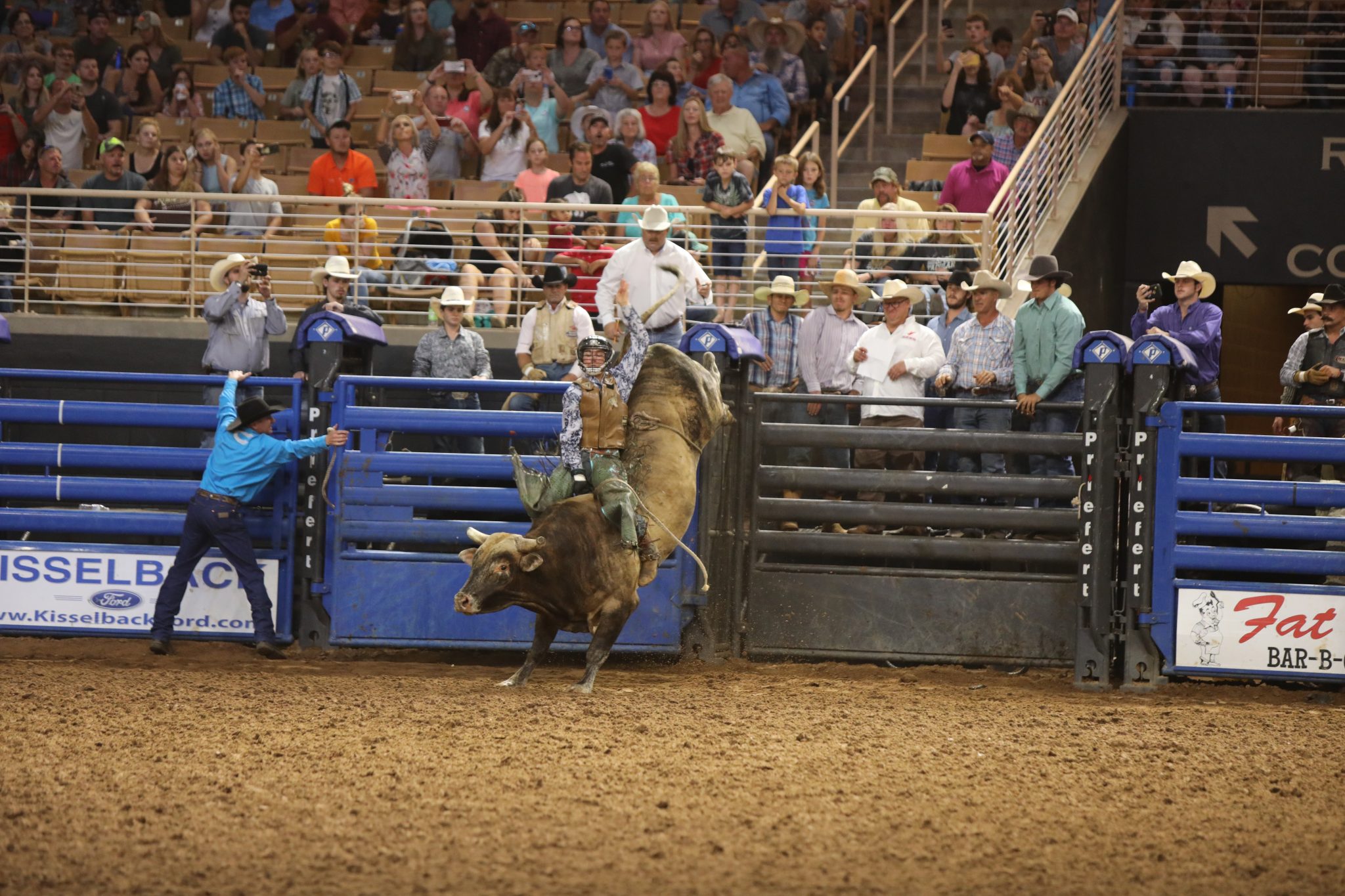Two thousand pounds of pure muscle paired with centrifugal motion makes for an 8-second challenge as bull riders hang on for a high score and an even bigger check. As cowboys go head-to-head with locally bred-to-buck bulls at the Silver Spurs Rodeo, judges aren’t just looking for them to make the 8; in fact, there’s a slew of requirements and skills needed to call yourself a professional bull rider. In this blog, we’ll teach you how to score in bull riding, the bulls’ and cowboys’ techniques, and other things judges look for during a ride.To start: There’s a huge difference between scoring and winning. If you’re not familiar with rodeo, it may be true to you that to score in bull riding, you simply have to hold on, but no bull rider will ever actually win with that mindset.

Just as in the other roughstock events, there are two judges watching each ride. Both judges are watching the rider and the bull, scoring them on their performance. Judges score the rider from 0-25 and the bull 0-25; the four judged scores are added together with a total maximum score of 100 points. If you think it doesn’t seem that tough, we’ll leave you with this note: Wade Leslie is the only bull rider in history to score a perfect 100 when he rode Wolfman back in 1991. The closest anyone else has ever been to a 100 point ride is when PBR bull rider Jose Vitor Leme and Woopaa set the highest score ever recorded in the PBR at 97.75 points in 2021. Once the chute gate opens and the bull bucks into the arena, the rider must keep one hand, called his free arm, in the air for the duration of the ride. If he slaps the bull or himself at any point, the clock stops, and he will receive a no score. For points to be awarded, the rider must stay mounted to the bull for a minimum of eight seconds, and he is scored only for his actions during those eight seconds. The cowboy’s points are awarded based on how well he covers the bull; judges want to see riders that are balanced and in control of the ride. Extra points will be awarded if the rider spurs the bull to encourage bigger bucks. The stock points come from the difficulty of the bull. For example, bulls that run and kick in a straight line won’t produce the number of points of bulls that turn back (spin) and buck close to the chute gates. Judges look for a bull’s style of movement, overall agility, and speed of its moves. In general, bulls have a raw power that can buck cowboys off fast with quick spins and vertical bucks, making it crucial for cowboys to be balanced and in sync with the bull during their rides. Judges look for constant control and rhythm in the rider as he tries to match his movements with the bull.However, in some instances, if the rider’s score is very low due to a bull’s poor performance, such as the bull stumbling or running into a fence, the judges may offer the rider the option of a re-ride. Giving up his original score, the rider will wait until all other riders have had their turn and then ride again. While this may seem great for the rider to get a second shot, he risks being bucked off and receiving a “no score.” Are you hooked on 8-second rides yet? You can see this exciting event in action by joining us for February, June, and October rodeo events in Kissimmee, Florida!

Heading 1
Heading 2
Heading 3
Heading 4
Heading 5
Heading 6
Lorem ipsum dolor sit amet, consectetur adipiscing elit, sed do eiusmod tempor incididunt ut labore et dolore magna aliqua. Ut enim ad minim veniam, quis nostrud exercitation ullamco laboris nisi ut aliquip ex ea commodo consequat. Duis aute irure dolor in reprehenderit in voluptate velit esse cillum dolore eu fugiat nulla pariatur.

Block quote
Ordered list
- Item 1
- Item 2
- Item 3
Unordered list
- Item A
- Item B
- Item C
Bold text
Emphasis
Superscript
Subscript

